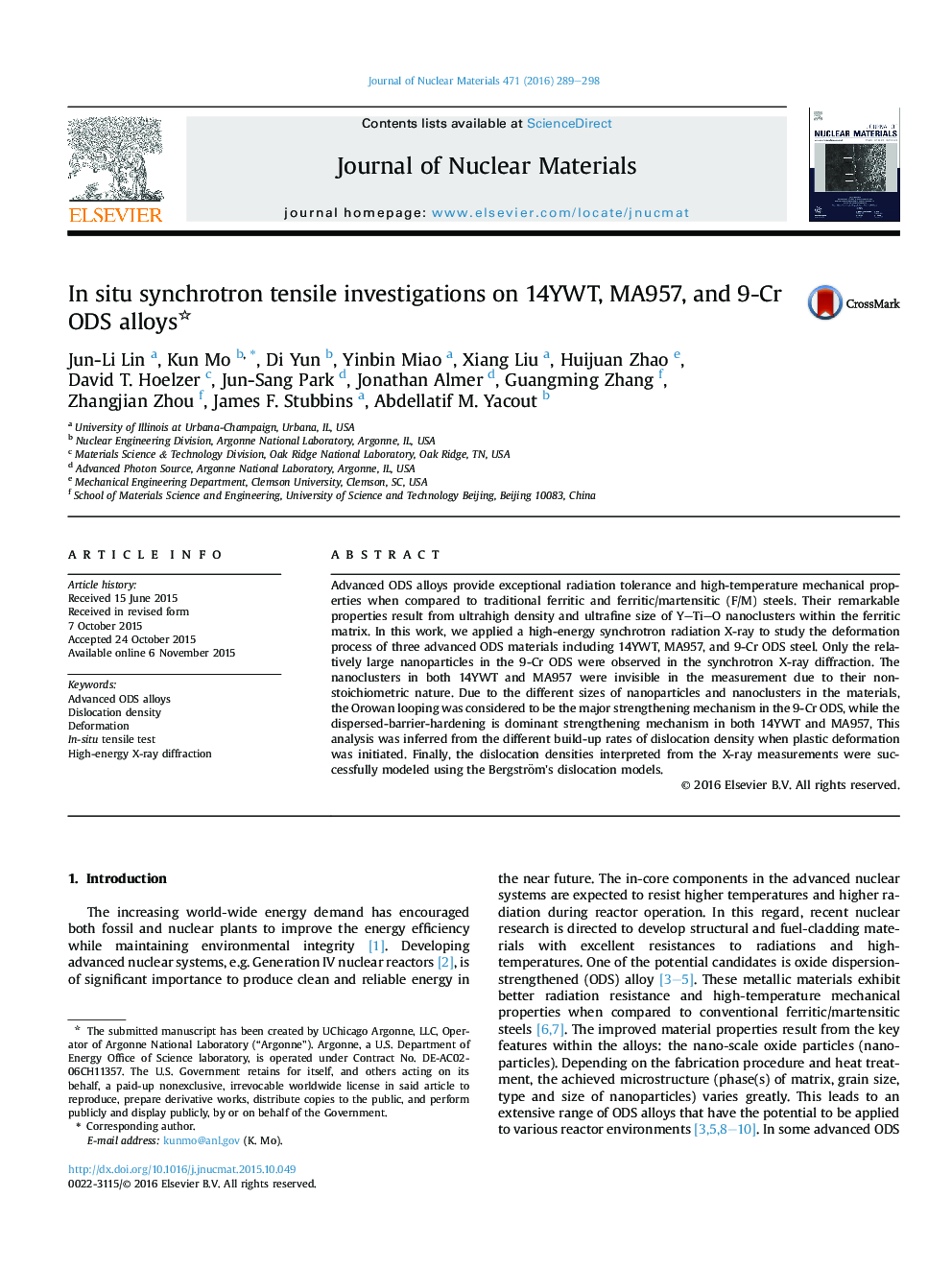| Article ID | Journal | Published Year | Pages | File Type |
|---|---|---|---|---|
| 1564762 | Journal of Nuclear Materials | 2016 | 10 Pages |
Advanced ODS alloys provide exceptional radiation tolerance and high-temperature mechanical properties when compared to traditional ferritic and ferritic/martensitic (F/M) steels. Their remarkable properties result from ultrahigh density and ultrafine size of Y–Ti–O nanoclusters within the ferritic matrix. In this work, we applied a high-energy synchrotron radiation X-ray to study the deformation process of three advanced ODS materials including 14YWT, MA957, and 9-Cr ODS steel. Only the relatively large nanoparticles in the 9-Cr ODS were observed in the synchrotron X-ray diffraction. The nanoclusters in both 14YWT and MA957 were invisible in the measurement due to their non-stoichiometric nature. Due to the different sizes of nanoparticles and nanoclusters in the materials, the Orowan looping was considered to be the major strengthening mechanism in the 9-Cr ODS, while the dispersed-barrier-hardening is dominant strengthening mechanism in both 14YWT and MA957, This analysis was inferred from the different build-up rates of dislocation density when plastic deformation was initiated. Finally, the dislocation densities interpreted from the X-ray measurements were successfully modeled using the Bergström's dislocation models.
